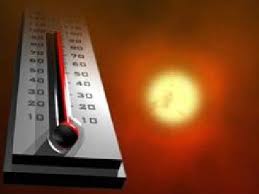Originally published Friday, June 14, 2013 at 8:01 PM
In an older home, the attic may have little insulation. Over time, what is there may have been disrupted, providing leak points where warm air escapes in the winter and hot air gets in during the summer.
Q: Why is my older home so hot?
A: This question comes up a lot, especially with older homes. In most cases, older homes are poorly insulated.
Energy codes have gone through many changes over the years, making homes more energy efficient. A well-insulated home holds in warmth during cold weather and keeps out the heat on hot days.
Current codes require the entire exterior wall cavity to be filled with insulation, including insulated headers over doors and windows, but this has not always been the case.
In an older home, the attic may have little insulation. Over time, what is there may have been disrupted, providing leak points where warm air escapes in the winter and hot air gets in during the summer.
Also, your attic may not have attic venting. Substandard venting leaves the hot air that collects on warm days to take the path of least resistance out, which may be down into the house.
Windows are often another weak point. It is possible your home might still have single-pane windows as opposed to the double and even triple-pane windows on today’s market.
There are several remedies, depending on the design of your home and the budget you have. A good first step would be to consider an energy audit to help you identify problem areas. Some utility companies provide the audits for no or very low cost so it would be worth checking with your local company.
Seattle City Light customers can find information about its audit program at
Puget Sound Energy customers can find information on its website, pse.com/savingsandenergycenter/ForHomes/Pages/HomePrint.aspx.
Some of the steps that can help keep your older home cool:
• Plant shade trees or vegetation to keep the strongest sun rays from heating your home.
• Provide awnings, trellises or other built structures outside to keep the sun from beating down on your windows.
• Consider replacing single-pane windows with double or triple pane with argon/insulated windows to minimize heat transmission. Windows can also be tinted to reduce solar-heat gain. If you choose to replace your windows, an added benefit is you can seal any gaps where leakage might be occurring during installation.
• It is difficult to add insulation to walls, but many times attic space can be easily accessed to blow in additional insulation. Also, attic vents can be installed to help the heat escape, since heat rises and will collect in your attic. Another often effective measure is to install an attic fan that is connected to a thermostat. It will help push hot air out of the attic.
• If exterior doors are the source of your leak, new caulking to seal or weather stripping could help you keep your home cooler in the summer and warmer in the winter.
• Whenever possible, take advantage of cross-ventilation by opening windows on opposite ends of the house to increase airflow. This is especially effective if you keep the house closed during the hottest parts of the day and open windows as the temperatures drop.
• Ceiling fans are effective for circulating the air, but even fans you get at the drugstore can help and they get quieter and more energy efficient every year.
• If you are thinking about getting a window unit or free-standing air-conditioners, try to shop for them offseason before demand and prices spike.
Jamie Hsu, Lakeville Homes, is a member of the Master Builders Association of King and Snohomish Counties’ Remodelers Council and provided the information contained in this article. If you would like more information or have questions about home improvement send them to homework@mbaks.com. Sorry, no personal replies. Always consult local codes and contractors.
 Facebook
Facebook
 X
X
 Pinterest
Pinterest
 Copy Link
Copy Link
